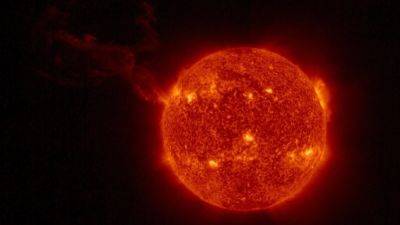It appears that the Sun is not going to relent anytime soon. This week has been one of the most explosive ones when it comes to solar activity. We have seen regular solar flare eruptions and radio blackouts every day of the week, and there have been three different solar storm incidents, including a G3-class storm on the night of September 18-19, that resulted in aurora displays as far south as France. But now, another solar storm threat is building up for the Earth. Yesterday, September 20, an M8-class solar flare erupted on the Sun and released a coronal mass ejection (CME) cloud in the same direction as the Earth. Researchers are now trying to confirm whether it can hit our planet or not.
Solar storm warning issued for today; geomagnetic storm may spark auroras, power cuts
03.09.2023 - 05:01 / tech.hindustantimes.com / Storm
A solar storm is heading for Earth today and the Space Weather Prediction Center (SWPC) of the National Weather Service has issued a Geomagnetic Storm Watch for today, September 3, 2023. On this day, Earth may experience a G1 level geomagnetic storm, the mildest on the 1-5 scale. While this geomagnetic storm could cause some aurora displays and minor disruptions in electrical grids, navigation, and communication systems, it is not expected to be a severe event, according to spaceweather.com
The SWPC reports that a minor G1-class geomagnetic storm began on September 2nd as Earth was hit by a high-speed solar wind stream that is generated by the Sun when it releases huge amounts of energy out into space. Notably, this solar storm is distinct from two Coronal Mass Ejections (CMEs) heading towards Earth. The first CME left the sun on August 30th, and the second was launched on September 1st. The arrival of these CMEs on September 3rd may extend the ongoing storm and potentially elevate it to a G2 level geomagnetic storm.
Coronal Mass Ejections, or CMEs, are massive releases of plasma and magnetic fields from the Sun's corona. They can expel billions of tons of material and carry an embedded magnetic field stronger than the background solar wind's interplanetary magnetic field (IMF). CMEs travel at varying speeds, some reaching Earth in as little as 15-18 hours, while others take days. As they move away from the Sun, CMEs increase in size, with larger ones encompassing a substantial portion of the space between Earth and the Sun upon arrival.
When a CME interacts with Earth's magnetosphere, its impact depends on the energy level and angle of contact. Geomagnetic storms have the potential to disrupt electronics, electrical systems, and spacecraft communication. They can also produce spectacular aurora displays in the night sky.
In the case of the G1-class geomagnetic storm today, minor power grid fluctuations may occur, especially in northern latitudes. Satellite operations could experience minor disruptions, and aurora displays may extend further south than usual, potentially reaching northern Michigan and Maine. If the geomagnetic storm intensifies, auroras could become even more vibrant and extend further southward.
While this storm event is being closely monitored, it is important to note that it is expected to be relatively mild, with minimal impacts on daily life and technology.
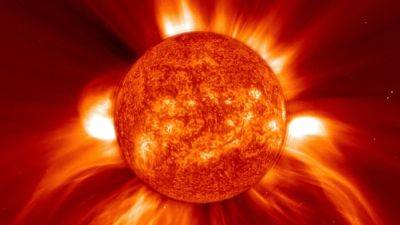
Solar storm STRIKES Earth! Intensely charged CME smashes into our planet, sparks terrifying blackouts
When it comes to terrifying solar storms, the last 24-hour period has been one of the worst since March 2023. The solar storm was triggered by a coronal mass ejection (CME) that was hurled towards the Earth's strike zone on September 18. There were speculations on whether it would hit the planet or not, but not only did it hit the Earth, it also arrived a day earlier than expected. Also, Earth was hit by multiple solar flare eruptions that caused severe radio blackouts. Know the full impact of this solar storm.
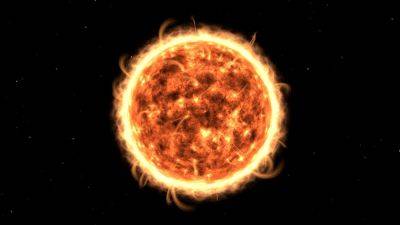
CME set to spark strong G2 geomagnetic storm, auroras on Earth
Geomagnetic storm today: Over the last few months, the Sun has become increasingly volatile and has been spewing out solar matter such as flares, CMEs, and other particles. This is due to the approaching peak of its 11-year solar cycle, also known as the solar maximum. During this period, solar activity is extremely high and the various planets, including Earth, come in the firing line of the resultant solar storms, geomagnetic storms, and more. Their frequency is likely to increase even more as we approach the solar maximum, which could arrive in 2025. Due to its volatile nature, NASA has several instruments monitoring the Sun's activity.
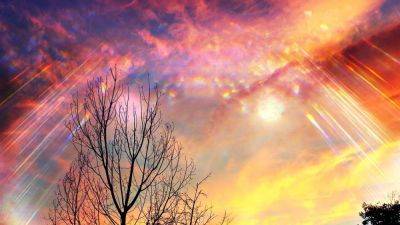
Solar storm alert! A CME just hit the Earth today and more are coming
Solar activity has been on the rise, with recent developments stoking concerns about potential repercussions for our planet. On September 17th, as predicted, Earth was hit by a Coronal Mass Ejection (CME) that was spewed out by the Sun earlier. While the initial impact did not trigger a geomagnetic storm, there's a possibility of minor G1-class storms being sparked today in the coming hours as Earth continues to traverse through the CME.

How Geomagnetic storms affect GPS, Power grids, pipelines, astronauts, even flyers
The sun is a gargantuan dynamic ball of fire, and its actions can affect us here on Earth. One of the ways it does this is by spewing out enormous amounts of energy, which hits the Earth and sparks geomagnetic storms. A geomagnetic storm is a disturbance in Earth's magnetic shield, which in itself protects all life from the harmful rays on the Sun. These storms happen when the sun shoots out shock waves or magnetic clouds that collide with our magnetic field. The most enormous one on record is the Carrington storm from 1859 that actually sparked fires in telegraph offices. Let's dive into how these solar storms impact various aspects of our lives via exploratorium

Double solar flare explosion sparks BLACKOUTS on Earth; Is another solar storm looming?
More solar activity has been detected on the Sun, and it could spell bad news for the Earth. Currently, there is a coronal mass ejection (CME) that is traveling towards us and is likely to strike the planet on Sunday, September 17. But before it can even hit us, more solar flares have erupted on the Sun. Two different M-class solar flares were detected exploding on the notorious sunspot region AR3429 which has already caused multiple solar flares so far. The extreme radiation from the solar flares sparked radio blackouts on the Earth, and scientists are now looking into the fact whether another CME was hurled towards the Earth and if it can spark another solar storm.
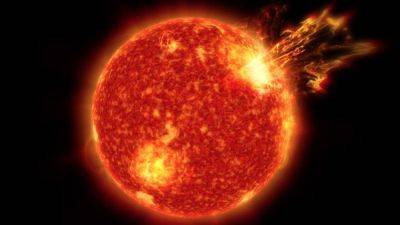
Solar storm warning! A massive CME can strike the Earth this weekend; Check details now
On Tuesday, September 12, the Earth was hit by an unexpected coronal mass ejection (CME) cloud, which triggered a powerful G2-class solar storm on Earth. The storm was moderate in intensity but it was still enough to interrupt wireless communication and trigger bright aurora lights in the higher latitudes. But the solar storm onslaught is not likely to stop anytime soon. Another CME has been unleashed from the Sun and it is again headed for our planet. As per prediction models, it is likely to reach the Earth on September 17 and deliver a glancing blow to the planet. Check the dangers that you should expect.
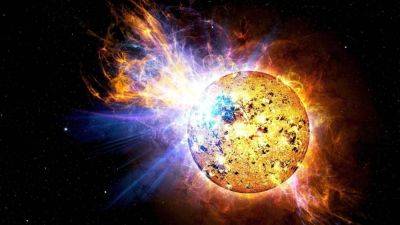
Solar storm ALERT! Solar flare eruption hurls CME towards the Earth; Will it hit?
Yesterday, September 11, two M-class solar flares erupted on the Earth-facing side of the Sun, and the latter of the two managed to release a large coronal mass ejection (CME) into space. According to data from NASA's Solar and Heliospheric Observatory (SOHO), it erupted on the notorious sunspot region AR3429 that recently came into Earth's view. The CME was noted to be in the range of Earth's strike zone and could deliver a glancing blow to our planet sparking a solar storm. But will it hit?
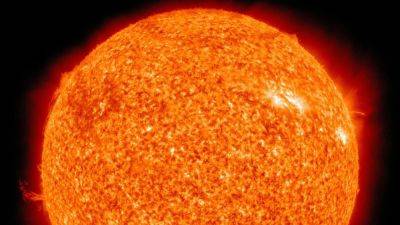
Solar storm fears rise as CME heads for Solar Orbiter; Blackouts hit America after solar flare
Solar activity has been on the rise ever since the start of the month. We have seen multiple solar flare eruptions and a couple of solar storms so far, but luckily they were not major events and their impact was very limited. However, in the last 24 hours, things have started to change. An M2.12-class solar flare erupted on the Sun, which in turn sparked a shortwave radio blackout on both the American continents. But that wasn't the worst incident of the day, as later, it was detected that a powerful coronal mass ejection (CME) cloud is headed for the the Solar Orbiter, the Sun-observing probe by the European Space Agency (ESA), and will strike it today, September 9. These events have raised concerns that an intense solar storm strike on the Earth is not too far away.

Tim Burton’s Batman Live Concert Tour Announced, Dates and Locations Revealed
Tim Burton’s Batman is hitting the road in 2024 as a live concert tour in celebration of the movie’s 35th anniversary.

Solar storm just hit Comet Nishimura! It cut off its tail, but comeback was dazzling
In a rare event that has galvanised skywatchers and sent them scooting for their telescopes and binoculars in order to cacth more than just a glimpse of a new comet that has just appeared. In fact, people all over the world are taking amazing pictures of Comet Nishimura as it travels through space. This comet was sighted for the first time in August, 2023 by a sky-watcher named Hideo Nishimura from Kakegawa City, Japan. He used a regular camera with a special lens to spot it. Finding a comet like this with a regular camera is a big deal because most new comets are discovered with fancy telescopes. This comet is especially important because a strange interaction with a solar storm was spotted.
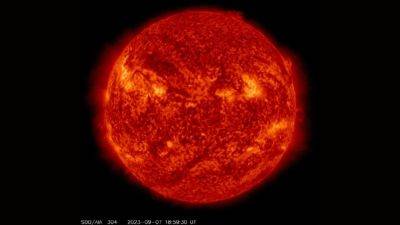
Solar flare WARNING! M2 flare could hit Earth after sunspot explosion
With the solar maximum approaching in the next few years, the Sun's activity is rising and is expected to rise even more. We have already seen a vast number of solar flares, CMEs, solar storms, and geomagnetic storms this year. Astonishingly, the Sun has already exceeded the predicted number of sunspots that were expected in the solar maximum, according to experts. To monitor the Sun's volatile nature, NASA's Solar Dynamics Observatory (SDO) carries a full suite of instruments that help it to observe solar activity.
